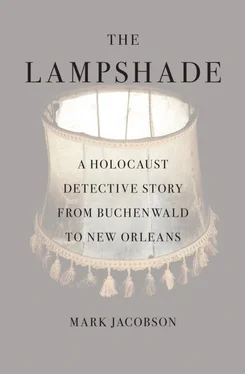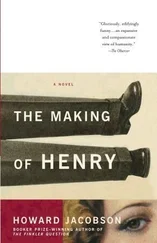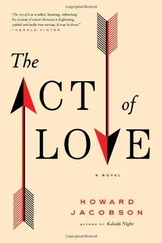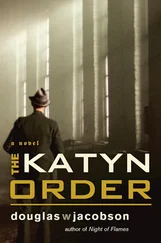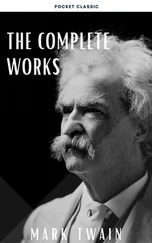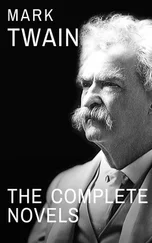Nominated for an Academy Award and seen by almost four million people on NET public television, Liberators was given a special screening at the renowned Apollo Theater on 125th Street in Harlem on December 17, 1992, in the wake of the Crown Heights riots. Sparked when an ambulance accompanying the motorcade of the Lubavitcher rebbe Schneerson ran over and killed a young Guyanese boy, an incident that led to the murder of a yeshiva student by a group of black youths, the riots threatened to destroy whatever remained of the old liberal black-Jewish voting coalition in New York. The screening of Liberators was supposed to help begin the healing process. David Dinkins, New York’s first and only African-American mayor, then running for reelection against a fully locked-and-loaded Rudolph Giuliani, addressed an audience that included Jesse Jackson, District Attorney Robert Morgenthau, Congressman Charles Rangel, and Elie Wiesel, as well as many rabbis and church pastors. Liberators should be seen as “a step along the road to mutual understanding and respect,” Dinkins said. “When we see those brave African-American soldiers freeing Jewish prisoners from the concentration camps, let us remember all that binds us together.” [25] Shortly before dropping the lampshade off at Buchenwald, I stopped in to visit Gert Schramm at his home in Eberswalde, thirty miles northeast of Berlin. Now in his early eighties, Schramm, son of a German woman and an African American, was the only black prisoner at Buchenwald. His father, Jack Brankson, an engineer from San Francisco, met his mother in Erfurt, where they fell in love and were married. When the Nazis came to power, Brankson was arrested and sent to Auschwitz, where presumably he was murdered. Young Gert was incarcerated in the children’s barracks at Buchenwald. He managed to survive, was embraced by the East German regime, and made a good living running a cab company. Schramm was present in the camp on April 16, 1945, when the Buchenwald Table was shown to the people from Weimar. “Yes. I remember it well,” Schramm said, pointing out that the white background seen in the Buchenwald Table photo was probably a sheet held up by prisoners so the photographer could get a better shot. He recalled the shrunken heads most vividly and “had no doubt whatsoever” that the Nazis skinned prisoners at the camp and made them into lampshades. In regard to the Liberators controversy, Schramm, who had an Obama sticker on his car, said he did see a number of black soldiers at the camp in the first days after liberation. “This was incredible to me. Outside of my father, who had already been missing for so long, I’d never seen a black person until the Americans came. I knew these people looked like me but I never thought of myself as black. I was a German and this was how I looked. This is what I saw in the mirror, myself, that was all. So I was amazed to see the black soldiers, but they were not all black. The story that blacks liberated the camp is not true.” Schramm said being black in Germany has not been a problem for him. “I often think that this was a very good thing, because from what I have read and what people have told me, my life would have been much harder in America.” Retired now, Schramm is writing his life story and makes a point of giving speeches to schoolchildren warning about the rising neo-Nazi movement. He still sits on the prisoners’ advisory board at Buchenwald but as a son of the GDR retains reservations about the “Wessie,” or western, influence at the former camp. Gert Schramm in Eberswalde with the lampshade
Unfortunately, as NET officials would later admit, the film’s version of the liberation of Buchenwald was “seriously flawed.” The 761st may have landed on Omaha Beach, punched a hole through the Siegfried Line, and risked their lives for their less-than-loving country many times during the push through Europe, but they had nothing to do with Buchenwald’s liberation. They weren’t even in the area at the time.
“I think it is somewhat like the GDR, another of those Buchenwald stories that are difficult to resist telling—black people from America, suffering from discrimination, oppression, coming here to save the Jews. It is an instance of something we perhaps wish was true but is not,” Knigge remarked. As for the visit of Barack Obama to Buchenwald, during which the president spoke of the “need to reflect on the human capacity for evil and our shared obligation to defy it,” Knigge remained thrilled, albeit in his sober way.
“He is very impressive,” he said. “We spoke for almost two hours. He is very interested in making a museum about slavery in Washington and was asking about that.”
The Buchenwald Memorial offices were undergoing renovation, so we entered the old SS building through the basement. It was dank and cold and Knigge pointed out the boilers where forced laborers once shoveled coal around the clock. We went up the staircase, the same stairs used by officers of the Death’s Head order, strode past rooms once inhabited by vicious camp overseers like Martin Sommer, who, according to the Nazi judge Konrad Morgen, kept a secret compartment for his torture instruments and slept with dead bodies under his bed. Kommandants Koch and Pister, and likely Ilse Koch herself, used these hallways.
A few more doorways and we were in the room where Herr Röll had first shown me the contents of his cabinet. It being late Friday afternoon, Knigge’s staff—Röll, Harry Stein, Sabine Stein, and the rest—were already gone for the day. Dr. Knigge placed the lampshade on a table where Herr Röll would be certain to see it and wrote a note. “Herr Röll, this is the lampshade made from human skin. Please handle it with the utmost care.”
The plan, as Knigge outlined, was to take the lampshade to the offices of the Landeskriminalamt Thüringen, which he described as the Thuringian office of “the German FBI.” They had a copy of the Bode lab DNA report and had agreed to give the lampshade a forensic workup, including testing the frame, the tassels, and the threads used to attach the panels. If no meaningful results were obtained, Knigge said, there was a possibility of sending the lampshade to a genetic testing lab in Leipzig.
The professor wrote out a receipt, acknowledging that I had dropped off the lampshade at Buchenwald for “further examination” and that it would be returned to me “upon request.” I insisted on this last phrase. Bringing the lampshade to Buchenwald, to the scene of the alleged crime, was bothering me. To leave it here any longer than necessary would have been an unforgivable betrayal. I couldn’t let that happen, not on my watch.
Knigge and I drove down to Weimar, had a bite to eat. The rain had turned to snow. “This is the perfect weather for this place, every day more of the same,” Knigge said.
It took until the new year before I got Knigge’s email with the results of the German forensic testing, which were the same as I had gotten from Avi Domb in Jerusalem. The German FBI had tried but could not find anything more than what was already in the Bode report. They did, however, ascertain that the Mardi Gras—colored tassels were a later addition to the shade, but that was no news.
“Now we come to the end,” Knigge’s email said. “The police research confirmed what we already know. To get further technically isn’t possible. Sorry about that… So there will be no last certitude about the object for now. That’s how history works. Here it’s snowing heavily which fits the issue at hand. Have a happy New Year anyhow, yours, VK.”
Six weeks later, Fat Tuesday came again, the fifth time since Katrina. We Bone Boys were out there, at Clouet and Dauphine, nice bunch of white homeowners in the tentatively stirring Bywater real estate market, augmented by a few of the post-Katrina social justice types, some St. Claude Avenue guerrilla art gallery owners, and a couple of stray gutter punks, ready to wake up the town for “da holiday,” as Big Chief Bo Dollis and the Wild Magnolias sing in “Meet Da Boys on Da Battlefront.” When we started marching, in the antediluvian days of 2005, there were twelve Bone Boys, “no dues, no officers, no meetings, not bound by circumstances.” Now there were more than a hundred Bones, every one playing some version of dead. With a picture in the Times-Picayune, us Bones were a coming krewe, a staple of conversation in the hipster downtown bars and coffee shops. In the manner of New Orleans, where everyone thinks they own the town and its legacy, there were grumbles that things were getting too big, too full of Johnny-come-latelies. Being unbound by circumstance was cool, but like the old-line krewes uptown, you couldn’t be parading with just anyone, you know.
Читать дальше
